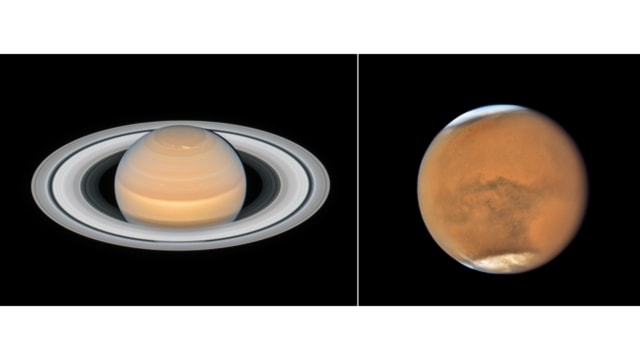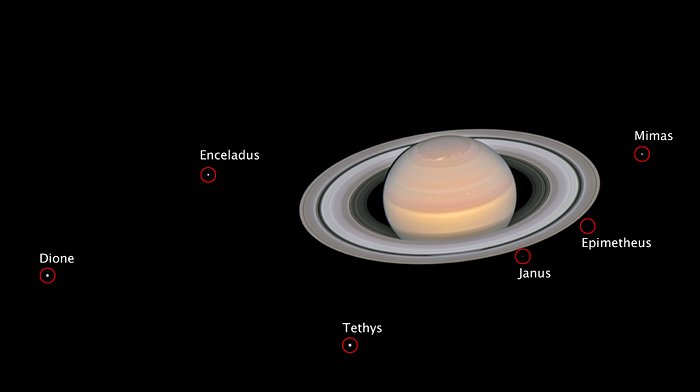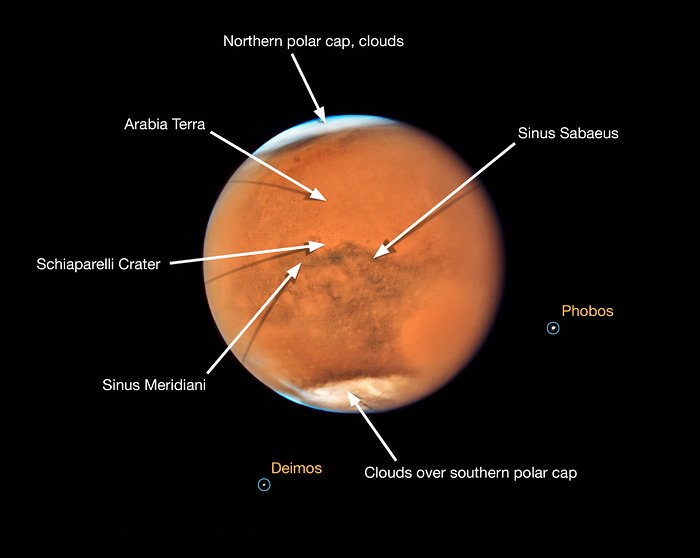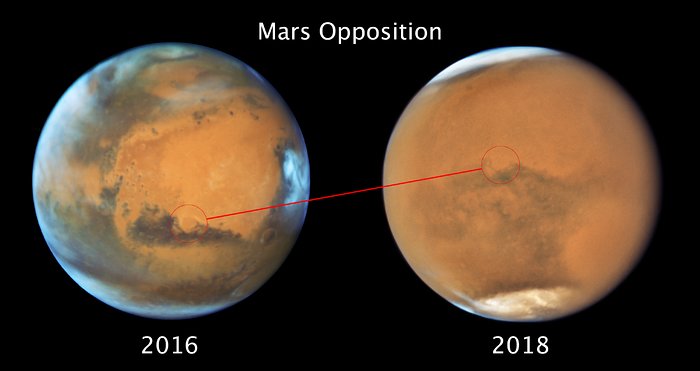Mars and Saturn Are Truly Spectacular in These Hubble Telescope Views
This summer, Mars and Saturn have come pretty close to Earth — and NASA's Hubble Space Telescope has captured every magnificent detail.
On July 27, Mars reached opposition, roughly aligning with the Earth and the sun. Just a few days later, in the early hours of Tuesday (July 31), Mars reached the closest point to Earth in its orbit. The Red Planet remains bright and especially visible in the night sky, as does Saturn. Saturn also reached opposition and came close to Earth this summer. [Most Amazing Hubble Space Telescope Discoveries]

The proximity of Saturn and Mars has given Hubble the unique opportunity to take especially detailed images of the two planets. Space.com caught up with Bonnie Meinke, a project scientist for the James Webb Space Telescope at the Space Telescope Science Institute in Baltimore, Maryland, to talk about both planets making a close approach to Earth and the incredible work that Hubble does in capturing events like this one.
Meinke presented some of Hubble's most spectacular images of Mars and Saturn at opposition in the video. In time-lapsed images of Saturn, you can see the planet's rings, several of its moons, and, because it's summer right now, you can see huge storm clouds in Saturn's northern hemisphere circling the planet's northern pole.

In a similar time lapse of Mars that Meinke displayed, you can clearly see the planet's moons Phobos and Deimos. What's perhaps even more spectacular, you can also see the global dust storm that encapsulates and swirls around the Red Planet.

Despite the clarity of the image, Mars almost looks blurry, because it is covered in a layer of dust. In the video, Meinke shows a Hubble image of Mars from 2016 for comparison, where you can see more of the planet's surface features.

Meinke described a number of other incredible cosmic moments that Hubble has captured over the years. She included Hubble's years of observing the Great Red Spot on Jupiter and how Hubble has shown in vivid detail how this spot is shrinking. Meinke also showed the movement of Neptune's large clouds.
Get the Space.com Newsletter
Breaking space news, the latest updates on rocket launches, skywatching events and more!
"Hubble's really become a weather satellite for our solar system," Meinke said.
Meinke also spoke about some of the unexpected finds that Hubble has made over the years. She noted Hubble's images of plumes that were found coming from Europa and interesting storm structures on Jupiter. Meinke stated that these images can give "us a better perspective of how storms happen and evolve on our own planet. And we can keep an eye on the entire solar system to see things change and evolve with time."
Email Chelsea Gohd at cgohd@space.com or follow her @chelsea_gohd. Follow us @Spacedotcom, Facebook and Google+. Original article on Space.com.
Join our Space Forums to keep talking space on the latest missions, night sky and more! And if you have a news tip, correction or comment, let us know at: community@space.com.

Chelsea “Foxanne” Gohd joined Space.com in 2018 and is now a Senior Writer, writing about everything from climate change to planetary science and human spaceflight in both articles and on-camera in videos. With a degree in Public Health and biological sciences, Chelsea has written and worked for institutions including the American Museum of Natural History, Scientific American, Discover Magazine Blog, Astronomy Magazine and Live Science. When not writing, editing or filming something space-y, Chelsea "Foxanne" Gohd is writing music and performing as Foxanne, even launching a song to space in 2021 with Inspiration4. You can follow her on Twitter @chelsea_gohd and @foxannemusic.









